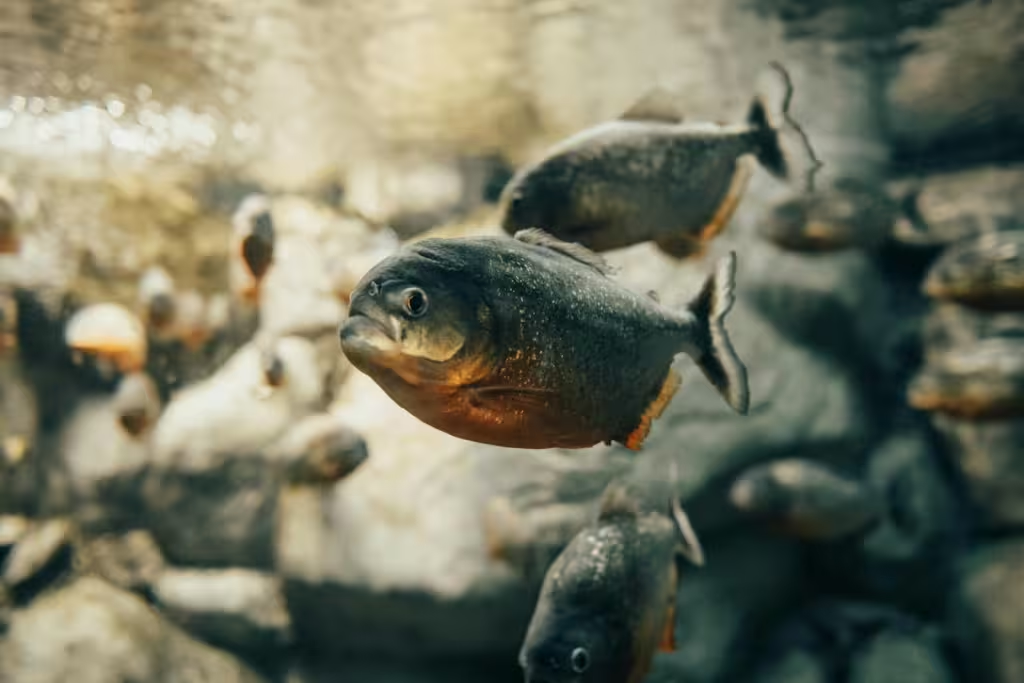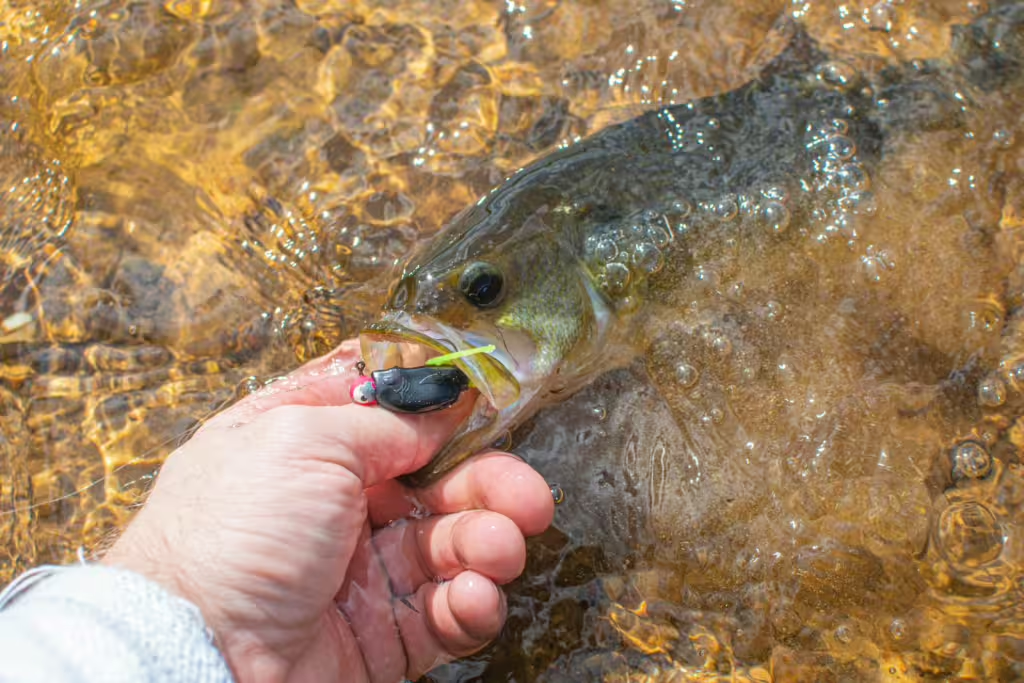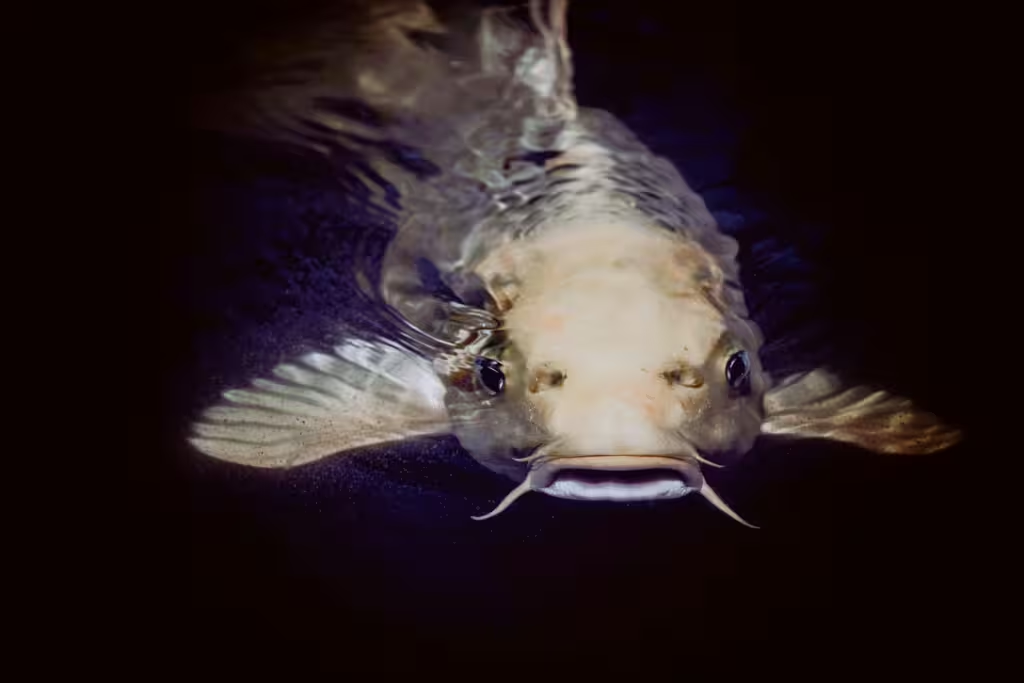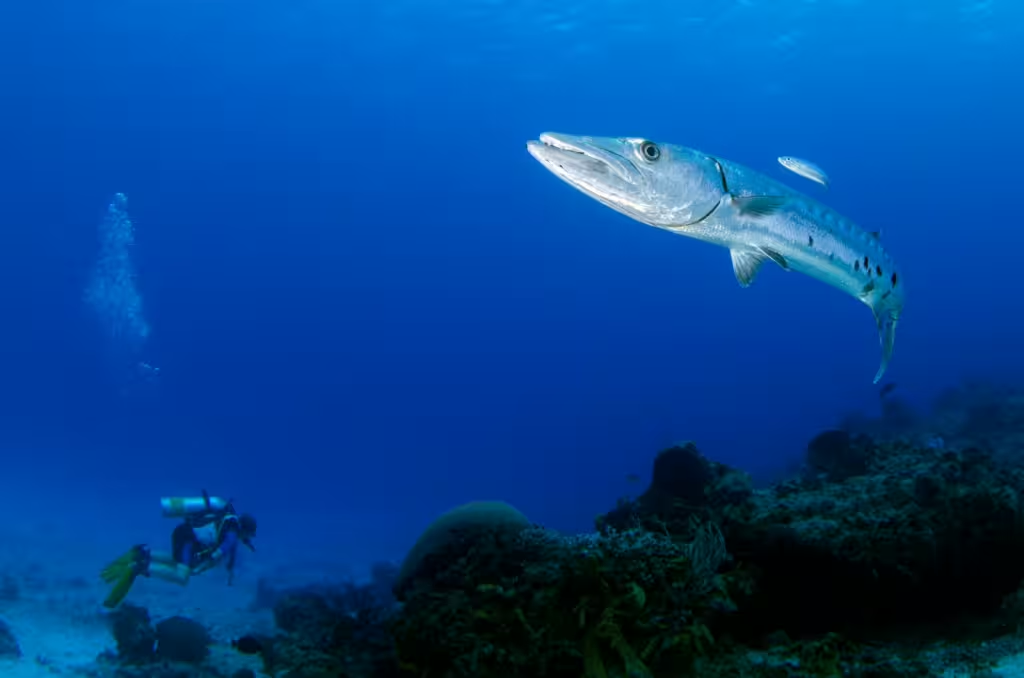Imagine if you will, that you’re swimming in the ocean. Your oxygen tank is full, the area is serene and picturesque, when suddenly, you sense the mood shift. Fish begin fleeing in every direction, floating octopuses dart into caves; even the sunlight streaming in from above begins to dim. You assume that the shadow that looms above you is a shark and in any other situation, you might be correct, but the barracuda is the apex predator of this reef and you are still in real danger.
When we think about apex predators living in aquatic environments, our thoughts almost immediately shift to sharks, whales, and other such large creatures. Yet, although sharks often dominate the conversation when it comes to marine hunters, not all aquatic ecosystems are able to support these creatures. Indeed, the underwater world is teeming with formidable fish predators of every shape and size. Moreover, some of these even rival sharks in their hunting prowess.
In this article, we will take a deep dive into the lives of these other aquatic predators. We will traverse through freshwater rivers and down into the vast oceans to learn about how these non-shark fish have evolved. We will learn what specific adaptations make these fish true masters of their domains, while simultaneously showcasing the incredible diversity of the marine food web; from the top down!

Great Barracuda (Sphyraena barracuda)
We lead with the Great Barracuda for several reasons; first, it’s one of the most recognizable non-shark hunters in the ocean and second, it’s bloody amazing! This sleek, torpedo-shaped predator can be found in tropical and subtropical oceans all over the planet. Known for their lightning-fast strikes, they can reach speeds up to 36 mph in mere moments. Barracudas are ambush predators, so this hunting methodology and speed is absolutely necessary for taking down prey. After all, fish don’t stick around when they see a barracuda coming their way; and neither should you! Just look at those teeth!
The barracudas powerful jaws are lined with sharp teeth; these features, coupled with their speed and distinct shape, make them formidable ocean hunters. The ambush tactics employed by barracudas often involve a sit-and-wait strategy. The massive fish lurking near reefs and mangroves until their prey is in the proverbial “line of fire.” When the time is right, they launch into a blitz attack, often catching their unsuspecting fish prey completely unaware. Their silvery of the barracuda helps it to blend into its environment and camouflaging the fish even when its in open water. This allows them to approach prey rather close without being detected. While generally solitary, these apex hunters can sometimes be seen in groups, especially during spawning seasons.
Notably, and despite the yarn we spun in the intro about their supposed ferocity, barracuda attacks on humans are rare and are usually the result of mistaken identity.
Northern Pike (Esox lucius)
Inhabiting freshwater lakes and rivers across the Northern Hemisphere, the Northern Pike is similar to the barracuda in a lot of ways. As the top predator in its ecosystem, this toothsome ambush predator is possessed of a slender body and a duckbill-shaped snout filled with sharp teeth. Like barracuda, the pike’s fearsome visage means that it must rely on stealth and sudden bursts of speed to capture prey. These voracious hunters will feed on a variety of organisms, including fish, amphibians, and even small mammals or birds that venture too close to the water’s edge. In essence, if you’re small and live near a fresh body of water, beware of pike!
Pike have a greenish coloration with lighter spots, which allows them to camouflage quite effectively among the aquatic vegetation of their home. Pike are known for their aggressive nature, and larger individuals have even been observed exhibiting cannibalistic behavior. Cruel or no, their presence is vital in maintaining the balance of freshwater ecosystems. Like most apex predators, the pike’s appetite is pivotal in controlling prey populations.
Goliath Tigerfish (Hydrocynus goliath)
Native to the Congo River Basin in Africa, the Goliath Tigerfish is one of the most formidable freshwater predators on the planet Earth. This massive fish can grow over 5 feet long, weighing in at some 100 pounds, and most of that hefty form is taken up by its most striking feature; its mouth. The aptly-named Goliath Tigerfish has a large mouth filled with strong, dagger-like teeth, some of which are nearly an inch long. When this prodigious maw does close, those chompers interlock perfectly, enabling the tigerfish to grasp slippery prey and hold on tight.
As one might suspect from the name, Goliath Tigerfish are known for their strength and ferocity, often hunting in turbulent waters where they ambush smaller fish. Fearsome as they are, however, their muscular bodies and keen senses make them a favorite among anglers and sport fishermen, specifically those who might be seeking a more challenging catch. Due to their predatory nature, they play a significant role in regulating fish populations in their native habitats.
Alligator Gar (Atractosteus spatula)
The Alligator Gar looks like something out of a dinosaur encyclopedia. These prehistoric-looking fish is native to the southern United States and looks very much like a reptilian alligator, even down to the teeth, scales, size, and ferocity. This particular gar has a broad, elongated snout filled with sharp teeth and a body covered in thick, diamond-shaped scales. Moreover, the Alligator Gar can grow up to long to 10 feet long and weigh over 300 pounds. When we say it’s a predator to rival a shark in some aspects, we aint foolin’.
Their size notwithstanding, Alligator Gars are ambush predators; as are their namesakes. They can often be found lurking motionless near the water’s surface before lunging at prey, which includes fish, birds, and small, unfortunate mammals that happen to be passing by. Interestingly enough, these fish actually possess a specialized swim bladder that functions like a lung, allowing them to breathe air and survive in oxygen-poor waters for a decent amount of time. Fortunately, Alligator Gar are generally not aggressive toward humans, who are doing what they can to fish’s dwindling populations.
Piranha (Pygocentrus nattereri)
We have touched on the Red-bellied Piranhas on this website before, but despite their reputation for being the most infamous freshwater fish, piranhas aren’t all that bad….as far as humans are concerned. If you are a small animal or insect living in a South American river, however, woe betide you. Piranhas are typically known for two things: their sharp teeth and legendary feeding frenzies. At only about 12 inches in length, piranhas aren’t really a lot for people to worry about. They are mostly opportunistic scavengers, helping out their ecosystem by eating what other creatures might not. That said, they do possess powerful jaws capable of delivering a forceful bite, and their triangular teeth are designed for slicing flesh…so it’s not as if you want to go smooching one of them!
Piranhas often hunt in schools, which can provide protection and increase hunting efficiency. It is because of this communal lifestyle that sees them engaging in certain feeding frenzies, though most of these tend to be triggered by stress, low food availability, or the presence of blood in the water.
Wels Catfish (Silurus glanis)
Found in the rivers and lakes of Europe and parts of Asia, the Wels Catfish can be counted among the largest freshwater fish species. These seemingly-gentle giants can grow to over 9 feet in length and weigh more than 300 pounds. Don’t their their silly faces and sluggish appearance fool you, however, Wels Catfish are formidable ambush hunter. Their broad, flat heads, sensitive whisker-like barbels, and cavernous mouths have all evolved in ways to make them the perfect predator in their freshwater ecosystems.
Wels Catfish rely on stealth and suction feeding to engulf prey, which includes fish, waterfowl, amphibians, and occasionally small mammals. Some individuals have even been observed lunging from the water to snatch pigeons or ducks near the shoreline…so no little guy is safe when they are around. Wels Catfish typically hunt at night, where their already acute senses give them an advantage. Their adaptations allow them to locate prey in even the murkiest water.

Wolf Fish (Anarhichas lupus)
The Atlantic Wolf Fish has, at times, been called the seawolf, and for good reason. This 5 foot, 40 pound predator can be found living in cold North Atlantic waters. Like almost all fish on this list, the Wolf Fish has a fairly fearsome appearance, with large, protruding teeth and strong jaws capable of crushing hard-shelled prey. Those prey species typically include sea urchins, crabs, shellfish, and other benthic organisms.
Like many other species, the teeth of the Wolf Fish continue growing throughout life, making them perfectly adapted for a diet of armor-clad invertebrates that might crack a tooth now and then. Despite their looks, Wolf Fish are typically solitary and are basically non-aggressive toward humans. Wolf Fish are most active at night, prowling rocky crevices and ocean floors for any crunchy morsel they can find. Besides being important predators in marine ecosystems, they help regulate populations of sea urchins that can bloom out of control and overgraze on ecologically vital kelp forests.
Giant Snakehead (Channa micropeltes)
The Giant Snakehead is yet another huge freshwater predator, though this one native to Southeast Asia. Known for its eel-like body, sharp teeth, and ferocious demeanor, the Giant Snakehead can grow over 4 feet long. It is also a powerful swimmer with a reputation for dominating local waters. The name snakehead comes from the fish’s flattened, serpentine head, which resembles, you guess it, a snake.
Snakeheads are highly aggressive hunters and consume fish, amphibians, crustaceans, and even small birds or mammals that wander into their midst. What sets them apart from many other fish, except the Alligator Gar, is their ability to breathe atmospheric air, allowing them to survive in low-oxygen water and even move short distances across land in search of new habitats.
Snakeheads are fiercely territorial, especially when guarding nests or offspring. In regions where they’ve been introduced and become invasive, they have wreaked havoc on local ecosystems. This includes parts of the United States, where they have begun outcompeting native species and disrupting ecosystems for several decades now.
Nile Perch (Lates niloticus)
Native to the Nile River and other freshwater systems in Africa, the Nile Perch has been one of the continent’s largest and most feared freshwater predators in the region for centuries. Capable of growing up to 6.5 feet long and weighing over 400 pounds, these powerful, opportunistic hunters are a prime example of what can happen when a non-native species gets introduced into an ecosystem in the wrong way.
Take for instance, the introduction of Nile Perch into Lake Victoria in the 1950s as a means of increasing more desirable sport fish into the lake. This decision is widely regarded as one of the most ecologically damaging decisions in modern history. The Nile Perch’s predation on native cichlids has since driven hundreds of species to extinction or near-extinction. Despite the environmental cost of their introduction, they remain a significant part of regional fisheries and are both feared and valued in equal measure.
Nile Perch feed on a wide range of prey, including fish, insects, and even their own young. They too are ambush predators, using the murkiness of African rivers and lakes to conceal their approach before lunging forward with tremendous force.

True Investigator Says…
As you can see, sharks may have their own week to themselves, but there are plenty of amazing, terrifying, and fascinating marine predators waiting to strike at just the right moment! Sure, sharks certainly dominate headlines as marine predators, but the iconic fish in the article above prove that the underwater world is filled with incredible aquatic hunters.
Each one of those amazing species plays a crucial role in its ecosystem, whether maintaining the balance of prey species or controlling invasive organisms. Whether they are feared of celebrated, all of these predators remind us of the complexity and drama that exists in the natural world.
Discover more from TrueInvestigator
Subscribe to get the latest posts sent to your email.


